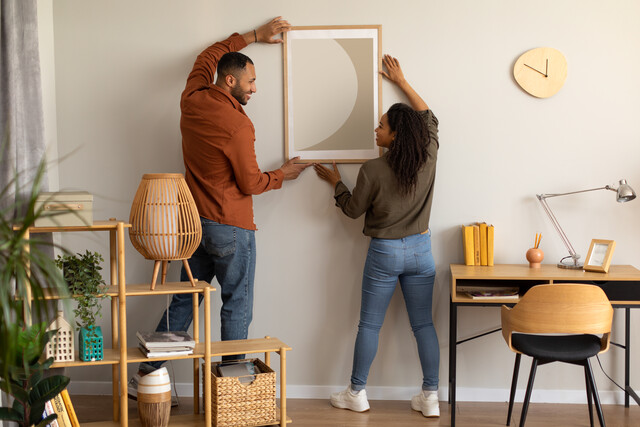Most of today's correspondence is electronic. We send endless e-mails flying across the Internet but have lost touch with the practice of old-fashioned correspondence. It is a shame because receiving a letter or short note in the mail from a friend or relative is a real pick-me-up that most of us would love. There are several forms of correspondence that we should all be familiar with, including the proper form of thank-you note and how to send an appropriate business letter.
Although you probably keep in touch with most of your friends and family by phone or e-mail, you should occasionally send a real letter, particularly to older relatives who do not have a computer. Older folks probably have fond memories of sending and receiving letters marking important milestones in life and would cherish a handwritten letter from you. It does not have to be long, but it should be well-written and carefully thought out. If you send a letter to a grandparent or other relative, they will cherish it and save it to read again and again.
Tips for Writing a Nice Social Letter:
· Think about what you want to say before you start writing.
· Make sure you give the recipient news about mutual friends, family, or others the person will be interested in hearing about.
· Update the recipient about your life.
· If you can, include an amusing story or incident that is appropriate.
· Ask the other person about his or her own life.
· A bit of reminiscing is always nice; for example, "I was thinking just last week about the summer I spent with you when I was 12."
· If you have a photo or two you can include, it is sure to bring a smile to your correspondent's face.
· Always use real stationery, not just a page ripped from a notebook. Do not give the recipient the impression you were simply writing as a chore to be scratched off your list.
· Write neatly and use a pen, not a pencil. Do not scratch out words or make a mess of the page. If you make a mistake, start again with a fresh sheet.
Business Letters
Business letters are still in use for any number of reasons, from recommending someone for a job, daily correspondence, legal cover letters, letters of complaint, and applying for a job. There is a proper form to follow for any business letter that should be followed, with some slight variations. A typical block business letter form that is universally accepted follows:
In most business letters, you should stick to the topic at hand until the last paragraph. Before your closing sentence, you can add a brief personal note if you like, such as "It was nice to see you again at last week's conference. Your wife was so charming at the dinner dance. Please give her my best."
Another example: "You've been such a terrific customer the last six years, I wanted to make sure I handled this personally. Please make sure you call me directly if you have any questions and have a great time at the cabin this summer!"
Letter of Complaint
There are times when you are justifiably angry because a product or service has not met your expectations and you feel compelled to write to the company to express your disappointment. There are rules of etiquette governing how to express your displeasure so that you can increase your chances of a satisfactory resolution. In most cases, a letter filled with seething anger is not going to get you the results you want. A calm, respectful letter clearly stating your complaint and outlining your expectations will be much more likely to yield results. Avoid insults, sarcasm, and emotions in favor of specific examples of what went wrong.
Here is an example of a very poor letter of complaint:
….I got the box home and spent hours trying to assemble the furniture. You must have written the instructions for a rocket scientist because my husband and I couldn't understand them! Nothing fit together and we wasted an entire day trying to put together your dining room set. We called the 1-800 number and got no help at all, which just made things worse. After six hours all we had to show for our time was one lousy chair….
A better version of the letter would be:
- …. When my husband and I attempted to follow the instructions, we had difficulty understanding sections 3 and 4, which seemed to contradict each other, since one referred to Part C attaching to Part E and the other referred to Part E attaching to Part B.
- Several of the joints did not fit together securely due to improperly drilled holes.
- The Customer Service help line put us on hold for 20 minutes before we were dropped from the line. When we called back, we were put through to a Supervisor who wasn't able to give us any suggestions for the fit problems.
- To date, we have only one assembled chair.
At the end of the second letter, the writer concluded, "I would ask that you contact me at 555-2365 to discuss a resolution to this problem. I would like a refund of our money so that we can invest in a furniture set more suited to our needs. I look forward to hearing from you."
Notice that the second letter clearly outlined the specific problems she had with the product and suggested a resolution. She kept emotion and anger out of the equation and was respectful; she did not insult the recipient or the company.
As a final precaution after writing a letter of complaint, you might have a friend or colleague review the letter. Another person can give you an objective opinion on the suitability of the letter.
Thank-you notes should be written any time you receive a gift or flowers, are invited to spend a weekend or to a special dinner, are taken to the theater or a concert, or are on the receiving end of some kind of favor. Most people do not send thank-you notes often enough, but they are easy to send and will certainly make someone's day more special.
A thank-you note does not have to be long and involved, but it should be specific and personal. It should never be preprinted. You will occasionally see or receive a preprinted thank-you note from a busy bride these days that says something like, "Thank you so much for the lovely shower/wedding gift. We just love it and appreciate your thoughtfulness." These go against every rule of etiquette and are an insult to the gift-giver, who took the time to shop for a specific gift. In return, the recipient is saying, "I couldn't be bothered to write you a personal thank you."
Thank-you notes should make specific reference to the gift and make some observation about it, noting how much the user will enjoy it or perhaps how it will be used. If you are thanking someone for a dinner or a favor, touch on the importance of the gesture or how much it meant to you. Merely saying thank you for it is too generic and impersonal. Do not just "go through the motions" without being truly enthusiastic and sincere in your thanks. The recipient will be able to tell the difference.
Write your thank-you notes on appropriate stationery. You can find inexpensive thank-you notes that are blank inside for your message at most stores. They will usually simply say, "Thank You," on the front, or you can choose note cards with a nice print instead and use them later for short notes to friends as well.
Children should be taught from a young age to write thank-you notes for gifts they receive for birthdays and holidays so that they get into the habit and carry it on into their adult years. When they graduate from high school and college they should certainly be used to thanking everyone in writing.
E-mail has revolutionized communication. It has also "dummied down" the way we write and communicate. Emoticons, abbreviations, and acronyms are overtaking our writing and making it a sort of insider's code that many people do not understand. The problem with this is that some readers feel left out of the loop or simply feel foolish if they do not understand what TTYL or IMHO mean when they receive e-mails from others. Your goal in sending any kind of correspondence is to always put other persons at ease, not make them uncomfortable. Avoid using these abbreviations and acronyms with anyone except your very closest friends, and even then use them only in the most casual e-mails. It is never acceptable to use acronyms in business e-mail.
Also keep in mind:
· The soul of e-mail etiquette is that each message should be short and to the point.
· Always address the person by name; do not just start with the message. This is still a letter, so do not forget the salutation, even if it is just, "Hi, Lori!" or "Bob:"
· Always sign the letter with your name. If you do not know the person well, be sure to use your first and last name.
· Do not forward jokes, recipes, or other "useless" e-mails to your entire contacts list. If you must send these, be sure you are sending them selectively to only those people who genuinely enjoy receiving them.
· Keep the subject line short and to the point.
· Be very careful when sending e-mails that have sensitive or personal information. Misdirected e-mails can be embarrassing or damaging to others. If you ever receive one of these, the proper response is to immediately send a return e-mail to the sender letting the person know that you received it by mistake but there is no need to worry; you will keep the information confidential and have destroyed the e-mail.
· Limit attachments to only what is essential.
· Always acknowledge receipt of business e-mails, even if it is just to say, "I got your e-mail. Will respond later." You may need to respond at length later, but the sender will be relieved to know the e-mail got where it needed to go.
Never use e-mails for the following:
· resigning from a job;
· sending condolences for a death;
· a thank-you note;
· requesting a raise or promotion;
· an apology;
· trying to discuss a subject that has been an ongoing argument.






























